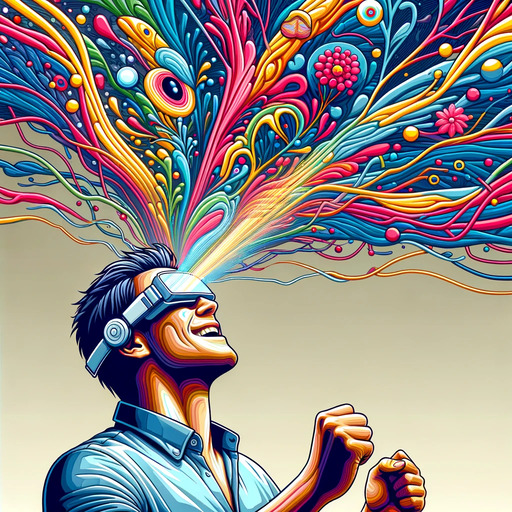Brain-computer interfaces, or BCIs, have come a long way since their initial use in communication and control. Nowadays, BCIs are being developed to enhance human sensory perception. The late Dr. Stephen Hawking’s battle with ALS has highlighted the potential of BCIs for people with physical limitations. Dr Hawking was diagnosed with amyotrophic lateral sclerosis (ALS) at 21 and gradually lost control of his muscles and, eventually, his voice. Initially, he relied on rudimentary eye movement trackers for communication. However, later advancements allowed him to utilize more sophisticated BCI-based systems. As technology advanced, Dr. Hawking was able to use sophisticated BCI-based systems to communicate and write groundbreaking scientific works.
The future of BCIs lies in sensory restoration and augmentation. Artificial retinas could help individuals with visual impairments regain sight, while those with deafness could perceive sound through cochlear implants or novel BCI interfaces. Haptic feedback could enable individuals to feel virtual textures or experience sensory details in new ways. However, ethical considerations such as privacy concerns and equitable access to such powerful tools must be considered. Dr. Hawking’s legacy inspires responsible development and application of BCIs to push the boundaries of human perception and create a future where limitations become opportunities.
Empowering the Senses: BCIs Expand Experience
BCIs, once confined to science fiction, now offer a new frontier in sensory restoration and enhancement. These remarkable technologies bridge the gap between the brain and external devices, providing hope for individuals with sensory impairments and augmenting human capabilities beyond their natural limits. This article explores how BCIs are revolutionizing our perception of the world, particularly in vision, hearing, and touch.
For individuals with vision loss, artificial retinas provide a glimmer of hope. These tiny implants bypass damaged photoreceptor cells in the eye, directly stimulating the remaining retinal neurons with electrical signals. As a result, some recipients have regained the ability to perceive light, shapes, and even movement. This has significantly improved their spatial awareness and daily lives.
Similarly, for those experiencing hearing loss, cochlear implants have become a life-changing technology. These surgically implanted devices convert sound waves into electrical signals, stimulating the auditory nerve directly. The users regain the ability to perceive speech, music, and environmental sounds, restoring connection and independence. People have reported reconnecting with loved ones, appreciating birds chirping, or enjoying music for the first time.
Beyond restoring lost senses, BCIs are venturing into sensory enhancement. Haptic feedback interfaces use vibrations, motors, and even electrical stimulation to create artificial sensations on the skin. This has enormous potential for applications in rehabilitation, gaming, and even communication for individuals with limited mobility. Imagine feeling the texture of virtual objects while exploring digital worlds or receiving navigational cues through vibrations embedded in clothing.
The Impact of these technologies extends far beyond the individual. By restoring sight, hearing, and touch, BCIs empower individuals to participate more fully in society, fostering independence, employment opportunities, and social connection. The emotional and social benefits are immeasurable, enriching lives and strengthening communities.
However, challenges remain. Accessibility, affordability, and ethical considerations regarding human augmentation are ongoing discussions. Nevertheless, the future of BCIs in sensory restoration and enhancement is undeniably bright. As technology continues to evolve, we can expect even more remarkable advancements, blurring the lines between human perception and technological augmentation and creating a world where sensory limitations become a thing of the past.
BCI Breakthrough: Sensory Synthesis Surpasses Limits
The development of BCIs has opened new frontiers in sensory augmentation. While restoring lost senses is a significant achievement, the true potential of BCIs lies in creating entirely new sensory experiences. Recent research has focused on theoretical technologies that can push the limits of human perception, such as “seeing” magnetic fields, “hearing” ultraviolet radiation, or feeling the texture of distant stars.
Integrating brain-computer interfaces with sensory prosthetics can provide direct access to information inaccessible to our natural senses. This could lead to groundbreaking advancements, such as experiencing art installations that evoke emotions through electromagnetic waves or hearing symphonies composed entirely of biosignals translated into sound. While seemingly futuristic, these possibilities are actively explored in research labs, paving the way for a future where our biology no longer limits sensory perception.
However, these advancements are accompanied by a complex web of ethical considerations. For instance, privacy concerns arise when BCIs collect and process sensitive brain data. Questions of identity also surface as we integrate technology with our very perception of the world. The potential for creating inequalities based on access to this technology raises concerns about social justice and discrimination.
These ethical dilemmas demand careful consideration and open dialogue to ensure responsible development and equitable access to these powerful tools. Transparency, informed consent, and robust regulations are crucial to address these concerns.
Despite these challenges, exploring the concept of a “superhuman” future with enhanced sensory abilities can open doors to unimaginable advancements. Imagine collaborating with AI systems on a deeper level through direct neural communication or experiencing virtual worlds with unprecedented immersion. These advancements could revolutionize scientific exploration, artistic expression, and human connection.
Ultimately, the journey of BCIs in sensory augmentation is about exploring the essence of human perception and pushing the boundaries of what we thought possible. It is a path fraught with challenges, but one that holds the promise of a future where our understanding of the world and ourselves is transformed, not limited, by technology.
Parting Thoughts
Brain-computer interfaces can transform our perception and significantly enhance our quality of life. These interfaces can aid in restoring sensory impairments, expanding the horizons of human perception, and pushing the limits of human understanding. However, the transformative nature of these interfaces also raises ethical concerns concerning privacy, identity, and social justice. To fully realize their potential, it is imperative that we engage in open and inclusive dialogues, prioritize responsible development, and ensure equitable access. As we navigate this uncharted territory, let us approach the possibilities with open minds and cautious hearts, considering the importance of ethical responsibility.
